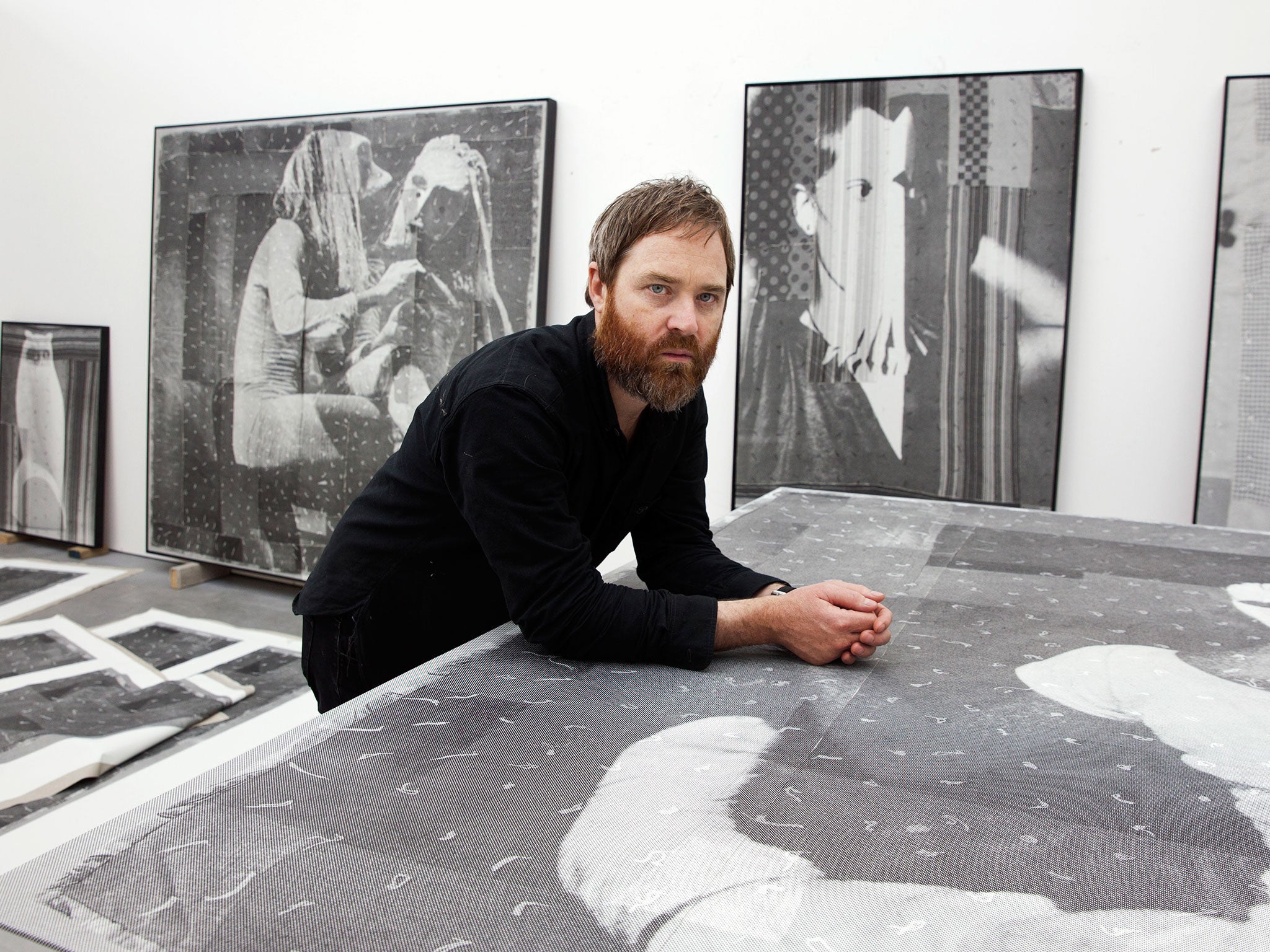David Noonan, artist: 'I think of pictures as being a dialogue between figuration and abstraction'
Karen Wright meets the artist at his studio in Homerton, east London

Your support helps us to tell the story
From reproductive rights to climate change to Big Tech, The Independent is on the ground when the story is developing. Whether it's investigating the financials of Elon Musk's pro-Trump PAC or producing our latest documentary, 'The A Word', which shines a light on the American women fighting for reproductive rights, we know how important it is to parse out the facts from the messaging.
At such a critical moment in US history, we need reporters on the ground. Your donation allows us to keep sending journalists to speak to both sides of the story.
The Independent is trusted by Americans across the entire political spectrum. And unlike many other quality news outlets, we choose not to lock Americans out of our reporting and analysis with paywalls. We believe quality journalism should be available to everyone, paid for by those who can afford it.
Your support makes all the difference.When I arrive at David Noonan's studio in Homerton, east London, I enter into a quietly domestic scene. Noonan introduces me to his two assistants, Pat and Dave, both artists themselves, who are quietly engaged with finishing a large work about to leave the studio for his imminent show.
Noonan, born in Australia in 1969, has been in the UK for 10 years: "Many people do not know I am Australian." He is married to Renee So, a fellow Australian artist, and they have a two-year-old son. He moved here from a studio in Bethnal Green nine months ago. Noonan points to his large wall of books. "I finally managed to get the archive out and have been looking through it, seeing things with new eyes.
Noonan has his singular way of working, collaging silk-screened images with textiles, creating atmospheric layers of imagery, attempting to negotiate the figurative and abstract. The latest work has changed palette from the sepia of past shows, dictated largely by the jute that has been the base for the collage.
Recently he has screened over it, "finding a different tone in the work". He has also turned to a different fabric to collage with, found in his rediscovered books, he has silk-screened images of American quilts on to fabric. They are three-dimensional tufted fabrics but rendered flatly.
He says it has made the work look tougher and less nostalgic: "They feel harder and cooler and, as my wife said, 'modern'."
Noonan deliberately does not want to make his images recognisable, although he tells me that one, a bendy figure, is a dancer from the Béjart dance company and another a performance artist. There is the danger if they are recognisable of "pinning them down". When I ask him about the artists he most admires, he says he prefers "looking at artists who do things a certain way or have an aesthetic not easily locatable. A certain authenticity that means it comes from a genuine place."
This set of images is unified not only by palette but also the abstract quilted element he has introduced to the work. Noonan says he is "playing with perception. I think of pictures as being a dialogue between figuration and abstraction. One layer is purely abstract but it is an existing thing. It is like film where you are seeing both images simultaneously." Having watched a large enigmatic work come together seamlessly in front of my eyes, I feel I have somehow participated in a film out of time.
David Noonan is at Xavier Hufkens, Brussels (xavierhufkens.com) until 24 October
Join our commenting forum
Join thought-provoking conversations, follow other Independent readers and see their replies
0Comments